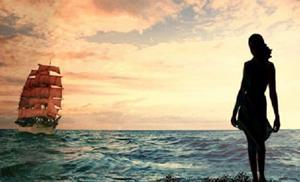Amundsen and Scott. The history of the conquest of the Earth's South Pole
What has Robert Scott been doing all these years? Like many of Her Majesty's naval officers, he pursues an ordinary naval career.
Scott was promoted to lieutenant in 1889; two years later he enters the mine and torpedo school. Having graduated from it in 1893, he served for some time in the Mediterranean Sea, and then, due to family circumstances, returned to his native shores.
By that time, Scott knew not only navigation, pilotage and minecraft. He also mastered surveying instruments, learned land surveying, and was well versed in the basics of electricity and magnetism. In 1896, he was appointed as an officer to a squadron located in the English Channel.
It was at this time that Scott’s second meeting took place with K. Markham, who, having already become the president of the Royal Geographical Society, persistently urged the government to send an expedition to Antarctica. During conversations with Markham, the officer gradually becomes captivated by this idea... so as not to part with it ever again.
However, about three more years passed before Scott made his fateful decision. With Markham's support, he submits a report on his desire to lead an expedition to the extreme south of the Earth. After many months of overcoming various kinds of obstacles, in June 1900, captain of the second rank Robert Scott finally received command of the National Antarctic Expedition.
So, by an amazing coincidence, at the turn of the 19th and 20th centuries, the two main participants in the future grandiose competition were almost simultaneously ready for their first independent polar expeditions.
But if Amundsen was going to go to the North, then Scott intended to conquer the extreme South. And while Amundsen was making a test voyage on his ship in the North Atlantic in 1901, Scott was already heading towards Antarctica.
Scott's expedition on the Discovery ship arrived on the shores of the icy continent in early 1902. For the winter, the ship was placed in the Ross Sea (South Pacific Ocean).
It passed safely, and in the Antarctic spring, in November 1902, Scott set off for the first time on a trip to the south with two companions - the military sailor Ernst Shackleton and the naturalist scientist Edward Wilson, secretly hoping to reach the South Pole.
True, it seems somewhat strange that, planning to do this with the help of dogs, they did not consider it necessary to acquire the necessary experience in handling dog sleds in advance. The reason for this was the British ideas (which later turned out to be fatal) about dogs as not very important vehicle in Antarctic conditions.
This is evidenced, in particular, by the following fact. For some time ahead of Scott's main group, an auxiliary party walked with an additional supply of food, personally dragging several sleighs with loads, and with a flag on which was a proud inscription: “We do not need the services of dogs.” Meanwhile, when Scott and his comrades set out on a hike on November 2, 1902, they were surprised by the speed with which the dogs pulled their loaded sleigh.
However, pretty soon the animals lost their initial agility. And it was not just the unusually difficult road, numerous uneven surfaces covered with deep, loose snow. The main reason for the rapid loss of strength in dogs was poor quality food.
With limited help from dogs, the expedition progressed slowly. In addition, snowstorms often raged, forcing travelers to stop and wait out the bad weather in a tent. In clear weather, the snow-white surface, which easily reflected the sun's rays, caused snow blindness in people.
But, despite all this, Scott's group was able to reach 82 degrees 17" south latitude, where no man had ever set foot before. Here, after weighing all the pros and cons, the pioneers decided to turn back. This turned out to be timely , because soon the dogs, one after another, began to die of exhaustion.
The weakest animals were killed and fed to the rest. It ended with the people, again, harnessing themselves to the sleigh. Enormous physical exertion in extremely unfavorable natural conditions quickly depleted my strength.
Shackleton's symptoms of scurvy began to appear more and more clearly. He was coughing and spitting blood. Bleeding was less evident in Scott and Wilson, who began to pull the sled together. Shackleton, weakened by his illness, somehow trudged behind them. Finally, three months later, in early February 1903, all three returned to Discovery.
Amundsen-Scott station: travel seasonality, life at the station, reviews of tours to the Amundsen-Scott station.
- Tours for May all over the world
- Last minute tours all over the world
“Place of residence - South Pole” - this is what the inhabitants of the American polar base “Amundsen-Scott” could rightfully write in their personal questionnaire. Founded in 1956 and continuously inhabited year-round ever since, Amundsen-Scott Station is an example of how humans can adapt to the most unfavorable living conditions. And not only adapt - build a comfortable home that can withstand the harsh climate of Antarctica for many years. In the era of commercial expeditions to the South Pole, Amundsen-Scott became a host home for tourists who came to trample underfoot the extreme southern point of the Earth. Travelers spend only a few hours here, but during this time they manage to get acquainted with the amazing life of the station and even send a postcard home with the stamp “South Pole”.
A little history
Amundsen-Scott is the first Antarctic station in the interior of the continent. It was founded in 1956, 45 years after the conquest of the South Pole, and bears the name of the glorious pioneers of the icy continent - the Norwegian Roald Amundsen and the Englishman Robert Scott. At the time of its founding, the station was located exactly at 90° south latitude, but by now, due to the movement of ice, it has deviated slightly from the South Pole point, which is now located about 100 meters from the station.
The original station was built under the ice, and scientific activities were carried out there until 1975. Then a domed base was erected, which served as a home for polar explorers until 2003. And then a large-scale structure appeared here on jack piles, which made it possible to raise the building as it was covered with snow. According to forecasts, it will last another 30-45 years.
The interiors here are no different from ordinary American “public places” - only massive doors that close like a safe indicate that this is happening in Antarctica.
Climate of the Amundsen-Scott station
The Amundsen-Scott station is located at an altitude of 2800 meters above sea level, which, taking into account the high rarefaction of the air in the South Pole region, turns into an actual 3500 meters, corresponding to the high mountain regions of the Earth.
The polar day lasts here from September 23 to March 21, and the peak of the “tourist season” occurs in December - January, when the temperature is most suitable for expeditions. At this time of year the thermometer does not show below -30 °C. Well, in winter there is about -60 °C and complete darkness, illuminated only by the northern lights.
Life at Amundsen-Scott Station
From 40 to 200 people permanently live on the Amundsen-Scott - scientists, researchers and professional polar explorers. In the summer, life here is in full swing - after all, outside the window it is a comfortable -22...-30 °C, and the sun shines around the clock. But for the winter, a little more than fifty people remain at the station to maintain its operation and continue scientific research. However, from mid-February to the end of October, access here from the outside world is closed.
The station is literally crammed with high-tech equipment: there is an 11-kilometer antenna for observing cosmic storms, a super-powerful telescope and a drilling rig embedded more than two kilometers into the ice, used for experiments on neutrino particles.
What to see
Tourists are allowed into the Amundsen-Scott station only for a few hours. The interiors are no different from ordinary American “public places” - only massive doors that close like a safe indicate that this is happening in Antarctica. A dining room, a gym, a hospital, a music studio, a laundry and a store, a greenhouse and a post office - this is all the simple life.
Amundsen wanted to reach the North Pole. He planned to drift in the ice, for a long time he asked Fridtjof Nansen for a specially created ship “Fram”, and when Nansen finally gave in and Amundsen set off to his goal, it turned out that the American Robert Peary had already bypassed him. 
And then Amundsen, being practically at sea, turns the ship around and sets off to the other extreme point of the earth - the south pole. And he sends Scott a letter inviting him to compete.
They started almost simultaneously, the distance between the groups was approximately 600 km. Although at the same time it can be said with a stretch. Amundsen still left earlier, almost a month. But here it is necessary to take into account that the section through which he was going to pass was more difficult - the abundance of ice cracks and hills made movement difficult. When the Norwegians reached the ice plateau, rising to a height of more than 3500 m above sea level, it became very difficult to walk: the air was thin, there was not enough oxygen for breathing. Amundsen describes thick fogs and snowstorms, when “earth and sky are one, nothing is visible...”. But, despite all the difficulties, Amundsen reached the Pole “like clockwork,” ahead of schedule. His sleigh was vigorously pulled by dogs, and when necessary, people put on skis. Each dog was not only a pulling force, but also an excellent “walking can of food.” And the morale in the Norwegian team was quite high...
And on December 14, 1911, the expedition reached the Pole. In his book The South Pole, Amundsen writes:
“In my opinion, no one has ever stood at a point diametrically opposed to the goal of his aspirations in such a full sense of the word as I did in this case. The North Pole region - what is there! - the North Pole itself has beckoned me since childhood, and here I am at the South Pole. Truly, everything is inside out!”
What about Scott? His expedition set off a month later than Amundsen; there were also five of them. But the snowmobiles failed, and the Manchurian ponies, which Scott preferred to dogs, had to be shot: they could not withstand the cold and overload. People dragged heavy sleds through the cracks in the ice glaciers. Disgusting weather conditions added to the organizational miscalculations. When a severe snowstorm kept Scott's group in a tent for the third day, the head of the expedition wrote down:
“We can only come to terms with our bad luck, but it’s not that easy. It seems undeserved, since the plans were well developed and were initially implemented so successfully...”
As a result, the British reached their goal a month later than their rivals, on January 18, 1912, and discovered the inscription “welcome” and the Norwegian flag on the pole. Scott writes in his diary:
“The Norwegians were ahead of us - Amundsen was the first to reach the pole! Monstrous disappointment! All the torment, all the hardships - for what? I think with horror about the way back..."
Alas, the return journey turned out to be impossible. Terrible frosts (temperatures at times dropped below -40 degrees C) coupled with an almost constant wind, inexorably took away my strength.
“We... are simply unable to walk any faster and are suffering terribly from the cold.”“Scott notes. In search of the next intermediate warehouse, they often lost their way and, forced to reduce rations, became severely malnourished.
The closer the British came to the base, the hungrier and weaker they became. Scott's diary shows how their will to live disappeared day by day and their despair grew. On March 3, he wrote: “Lord, help us, we cannot withstand such torment, that’s clear.” But even in these conditions, the detachment carried the most valuable geological collection of collected rock samples weighing about 15 kg until the very end, although each extra kilos was the heaviest burden.
In addition, despite incredible hardships, Scott continued, sometimes losing track of the days, in severe frost, to keep diary entries. Gradually they became shorter and shorter...
One can only marvel at the courage of these people who remained human to the end. They carried the unconscious E. Evans, who received a head injury during a fall into a crack. Evans died first...
The second was Captain Oates, who suffered frostbite in both legs. He asked not to stay for his sake, but his comrades could not leave him. Then Oates calmly said on the morning of March 16: “I’ll go for a walk,” and crawled out of the tent... his body was never found. There are three travelers left.
Scott's last camp was only 11 miles (20 kilometers) from the One Ton camp with a supply of food, but a strong blizzard prevented them from leaving the tent and moving on; the polar explorers' strength was already running out.
Then Scott makes one last entry:
“Thursday, March 29th. Since the 21st there has been a continuous storm... On the 20th we had enough fuel for two cups of tea and enough dry food for two days. Every day we planned to go to the warehouse, which is 11 miles away, but the snowstorm continues behind the tent.
I don't think we can hope for the best now. We will endure until the end, but we are weakening and death, of course, is close. It's a shame, but I don't think I can write anymore. R. SCOTT."
And a note: “For God’s sake, don’t leave our loved ones”.
The bodies of Scott, Wilson and Bowers were not found until November 12. Judging by the fact that Scott lay in an unfastened sleeping bag and took the diaries of both comrades, he died last.
In February 1913 Amundsen wrote:
“I would sacrifice fame, absolutely everything, to bring him back to life... My triumph is overshadowed by the thought of his tragedy, it haunts me.”
The Norwegian himself found his last refuge in the Arctic 16 years after Scott remained forever in Antarctica.
In January 1913, a cross was erected on top of a hill overlooking Scott's first winter camp. The names of the victims and a significant line from the 19th century English poet Tennyson were inscribed on it:
“Fight and search, find and not give up”.
Later in 1957, near the South Pole at an altitude of 2800m. Americans opened the Amundsen-Scott inland polar station
And Piri?
It was only in the 1980s and 1990s, when the diaries, maps and photographs of Peary's expedition were studied, that his primacy was called into question. Research by the Navigation Foundation concluded that Peary was no more than 8 km away. from your goal. This result was also confirmed by the National Geographic Society. In 1996, Robert M. Bryce, who spent 20 years studying this controversial issue, published the book “Cook and Peary: The Polar Controversy, Resolved,” in which he argued that neither Cook, who simultaneously with Piri announced that he had reached the North Pole, neither Piri himself reached the pole and that the latter had only 160 km to go to the desired goal... The discussion on this issue is not over to this day.
These are the vicissitudes of fate...
Below I publish a verse from which the last line was embossed on the monument to Robert Scott, and was also used by V. Kaverin in “Two Captains”.
There is no point in the king being idle,
At the hearth, buried among the rocks,
With an old wife, I would give away
The laws are strict among these savages,
That they sleep, eat, graze, without knowing me.
I will not seek rest from wanderings; I'll finish my drink
Life to the end; everything that happened to me was complete,
Did you suffer - greatly, rejoice - greatly, alone?
And with those who loved me; on the shore
And in the sea, when Hades foams through the waves
It rained down upon us; I have become a name;
An eternal wanderer with a greedy soul
I have seen a lot, I know a lot;
Human cities, climates, manners,
Soviets, states, and myself
He was honored among them;
I drank the joy of battle among friends
Far away on the sonorous plains of Troy.
I became a part of everything that came my way;
But every meeting is just an arch; through it
An unfamiliar path shines through, whose horizon
Moves away and melts into infinity.
How boring it would be to stop
Rusting in a scabbard does not shine in action!
It’s as if life is in your breath! Life after life -
Everything would be small; me and from one
There's not much left; but every hour
Rescued from centuries of silence
Brings something new; and it was mean
Almost three summers to bury myself
And the gray spirit that burns so with desire
To follow knowledge like a fallen star,
Stepping beyond the limits of our thoughts.
And here is my son, good Telemachus,
To whom will I leave the scepter and the island -
He, my beloved, strives to complete
This work, with slow patience
Soften harsh people, gradually
By taming them to useful work.
He performs his duty flawlessly
Public; can I rely
For tender care and honor,
With which gods he will surround
Home when I leave here.
He has his own job, I have mine.
And here is the port; the ship inflated the sail;
The dark seas lie in darkness.
Sailors, you worked and thought with me,
You greeted the thunder with equal joy
And the sun is bright, setting out to meet
Free hearts - both you and I are old;
Old age still has honor and duty.
Death will hide everything; but we'll make it to the end
We have accomplished a noble feat,
Worthy of people who fought with gods.
The reflection on the rocks is gradually fading; day
Leaves; the moon is creeping slowly; polyphonic
The depths groan. Let's go, friends,
It's not too late new world search.
Sit down and push off boldly
From the raging waves; target - sunset
And further, to where the stars drown
In the west until I die.
Perhaps the currents will drown us;
Maybe we'll sail to the Islands
Happy, where we meet Achilles again.
Much will pass away, but much will remain;
Although we do not have the strength that played
In the old days, both heaven and earth,
We remained ourselves; hearts of heroes
Worn out by years and fate,
But the will adamantly calls us
Fight and search, find and not give up.
Alfred Lord Tennyson
In December 1911, the famous Norwegian explorer Roald Amundsen was the first to reach the South Pole. In honor of this day, we decided to see how polar explorers live in our time.
Photo blogger Sergei Dolya says: “The Amundsen-Scott station, named after the discoverers of the South Pole, amazes with its scope and technology. In a complex of buildings around which there is nothing but ice for thousands of kilometers, there is literally its own separate world. They didn’t reveal all the scientific and research secrets to us, but they gave us an interesting tour of the residential blocks and showed us how polar explorers live...”
Post sponsor: Chicken pox: Prevention and treatment.



3. Initially, during construction, the station was located exactly at the geographic South Pole, but due to the movement of ice over several years, the base shifted to the side by 200 meters.

4. This is our DC-3 plane. In fact, it was heavily modified by Basler, and almost everything inside it, including avionics and engines, is new.

5. The plane can land both on the ground and on ice.

6. This photo clearly shows how close the station is to the historical South Pole (group of flags in the center). And the lone flag on the right is the geographic South Pole.

8. It stands on stilts, just like many houses in the north. This was done to prevent the building from melting the ice underneath and “floating.” In addition, the space below is well blown by winds (in particular, the snow under the station has not been cleared even once since its construction).

9. Entrance to the station: you need to climb two flights of stairs. Due to the thinness of the air, this is not easy to do.

10. Residential blocks.

11. At the Pole during our visit it was -25 degrees. We arrived in full uniform - three layers of clothing, hats, balaclavas, etc. - and then we were suddenly met by a guy in a light sweater and Crocs. He said that he was used to it: he had already survived several winters and the maximum frost he experienced here was minus 73 degrees. For about forty minutes, while we were walking around the station, he walked around like this.
Did you like it? Want to stay updated? Subscribe to our page at
The rivalry between the British and Norwegian expeditions, who sought to reach the center of Antarctica, is one of the most dramatic geographical discoveries in the history.
In 1909, the South Pole remained the last of the major geographical trophies not taken. It was expected that the United States would enter into a fierce battle over it with the British Empire. However, the leading American polar explorers Cook and Peary at that time focused on the Arctic, and the British expedition of Captain Robert Scott on the Terra Nova vessel received a temporary head start. Scott was in no hurry: the three-year program included extensive scientific research and methodical preparation for the trip to the Pole.
These plans were confused by the Norwegians. Having received a message about the conquest of the North Pole, Roald Amundsen did not want to be the second there and secretly sent his ship "Fram" to the South. In February 1911, he already received British officers at a camp on the Ross Glacier. “There is no doubt that Amundsen's plan is a serious threat to ours,” Scott wrote in his diary. The race has begun.
("img": "/wp-content/uploads/2014/12/polar_01.jpg", "alt": "Captain Scott", "text": "Captain Scott")
("img": "/wp-content/uploads/2014/12/polar_02.jpg", "alt": "Roald Amundsen", "text": "Roald Amundsen")
In the preface to his memoirs, one of the members of the Terra Nova expedition later wrote: “For scientific research give me Scott; for a jerk to the pole - Amundsen; pray to Shackleton for salvation.”
Perhaps a penchant for the arts and sciences is one of the few reliably known positive qualities of Robert Scott. His literary talent was especially evident in his own diary, which became the basis for the myth of a hero who fell victim to circumstances.
Cracker, unsociable, human-function - Roald Amundsen was created to achieve results. This planning maniac called adventures the unfortunate consequence of poor preparation.
Team
The composition of Scott's expedition shocked the polar explorers of that time, numbering 65 people, including the Terra Nova crew, twelve scientists and cameraman Herbert Ponting. Five people set off on the trip to the Pole: the captain took with him the cavalryman and groom Ots, the head of the scientific program Wilson, his assistant supply manager Evans and, at the last moment, the sailor Bowers. This spontaneous decision is considered fatal by many experts: the amount of food and equipment, even skis, was designed only for four.
("img": "/wp-content/uploads/2014/12/polar_03.jpg", "alt": "Captain Scott", "text": "Captain Scott's team. Photo by the Norwegian National Library.")
Amudsen's team could win any of the modern winter ultramarathons. Nine people landed with him in Antarctica. There were no mental workers - these were, first of all, physically strong men who had a set of skills necessary for survival. They were good skiers, many knew how to drive dogs, were qualified navigators, and only two did not have polar experience. The five best of them went to the Pole: the path for Amundsen's teams was paved by the Norwegian cross-country champion.
("img": "/wp-content/uploads/2014/12/polar_04.jpg", "alt": "Roald Amundsen", "text": "Roald Amundsen team. Photo by the Norwegian National Library.")
Equipment
Like all Norwegian polar explorers of that time, Amundsen was a proponent of studying Eskimo ways of adapting to extreme cold. His expedition dressed in anoraks and kamikki boots, improved during the winter. “I would call any polar expedition without fur clothing inadequately equipped,” wrote the Norwegian. On the contrary, the cult of science and progress, burdened by the imperial “white man's burden,” did not allow Scott to benefit from the experience of the Aborigines. The British wore suits made of wool and rubberized fabric.
Modern research - in particular, blowing in a wind tunnel - has not revealed a significant advantage of one of the options.
("img": "/wp-content/uploads/2014/12/polar_05.jpg", "alt": "Roald Amundsen", "text": "On the left is Roald Amundsen's equipment, on the right is Scott's.")
Transport
Amundsen's tactics were both effective and brutal. His four 400-kilogram sleigh with food and equipment was pulled by 52 Greenland huskies. As they moved toward their goal, the Norwegians killed them, fed them to other dogs, and ate them themselves. That is, as the load decreased, the transport, which was no longer needed, itself turned into food. 11 huskies returned to base camp.
("img": "/wp-content/uploads/2014/12/polar_10.jpg", "alt": "Roald Amundsen", "text": "Dog team on Roald Amundsen's expedition. Photo from the Norwegian National Library.")
Scott's complex transportation plan included the use of a motorized sled, Mongolian ponies, a team of Siberian huskies, and a final push on his own feet. An easily predictable failure: the sleigh quickly broke down, the ponies were dying of cold, there were too few huskies. For many hundreds of kilometers, the British themselves harnessed themselves to the sleigh, and the load on each one reached almost a hundredweight. Scott considered this rather an advantage - in the British tradition, the researcher had to reach the goal without “outside help.” Suffering turned achievement into feat.
("img": "/wp-content/uploads/2014/12/polar_09.jpg", "alt": "Roald Amundsen", "text": "Motorized sleigh on Scott's expedition.")
("img": "/wp-content/uploads/2014/12/polar_13.jpg", "alt": "Roald Amundsen", "text": "Top: Mongolian ponies on Scott's expedition. Below: the British are pulling cargo.")
Food
Scott's failed transportation strategy led his people to starvation. By dragging a sleigh on their feet, they significantly increased the duration of the journey and the amount needed for such physical activity calories. At the same time, the British were unable to carry the required amount of provisions.
“Terrible disappointment! I feel pain for my faithful comrades. The end of all our dreams. It will be a sad return,” Scott wrote in his diary.
The quality of the food also affected. Unlike Norwegian biscuits, which contained wholemeal flour, oatmeal and yeast, the British was made from pure wheat. Before reaching the Pole, Scott's team suffered from scurvy and nervous disorders, associated with vitamin B deficiency. She did not have enough food for the trip back and did not have enough strength to walk to the nearest warehouse.
About the nutrition of the Norwegians, it will be enough to say that on the way back they began to throw away excess food to lighten the sleigh.
("img": "/wp-content/uploads/2014/12/polar_20.jpg", "alt": "Roald Amundsen", "text": "Stop. Roald Amundsen's Expedition. Photo from the Norwegian National Library.")
To the Pole and back
The distance from the Norwegian base to the pole was 1,380 kilometers. It took Amundsen's team 56 days to complete it. Dog sleds made it possible to carry away more than one and a half tons of payload and create supply warehouses along the way for the return journey. On January 17, 1912, the Norwegians reach the South Pole and leave a Pulheim tent there with a message to the King of Norway about conquering the Pole and a request to Scott to deliver it to its destination: “The way home is very far, anything can happen, including something that will deprive us of the opportunity to personally report our journey." On the way back, Amundsen's sleigh became faster, and the team reached the base in 43 days.
("img": "/wp-content/uploads/2014/12/polar_16.jpg", "alt": "Roald Amundsen", "text": "Roald Amundsen's team at the South Pole. Photo from the Norwegian National Library.")
A month later, Amundsen's pulheim at the pole is found by the British, who have traveled 1,500 kilometers in 79 days. “Terrible disappointment! I feel pain for my faithful comrades. The end of all our dreams. It will be a sad return,” Scott wrote in his diary. Disappointed, hungry and sick, they wander back to the coast for another 71 days. Scott and his last two surviving companions die in a tent from exhaustion, 40 kilometers short of reaching the next warehouse.
Defeat
In the autumn of the same 1912, a tent with the bodies of Scott, Wilson and Bowers was found by their comrades from the Terra Nova expedition. The last letters and notes lie on the captain’s body, and Amundsen’s letter to the Norwegian king is kept in his boot. After the publication of Scott's diaries, an anti-Norwegian campaign unfolded in his homeland, and only imperial pride prevented the British from directly calling Amundsen a murderer.
However, Scott’s literary talent turned defeat into victory, and placed the painful death of his companions above the perfectly planned breakthrough of the Norwegians. “How can you equate Amundsen’s business operation with Scott’s first-class tragedy?” - contemporaries wrote. The primacy of the “stupid Norwegian sailor” was explained by his unexpected appearance in Antarctica, which disrupted the preparation plans of the British expedition, and the ignoble use of dogs. The death of the gentlemen from Scott's team, by default more strong in body and spirit, was explained by an unfortunate coincidence of circumstances.
It was only in the second half of the 20th century that the tactics of both expeditions were subjected to critical analysis, and in 2006 their equipment and rations were tested in the most realistic BBC experiment in Greenland. British polar explorers did not achieve success this time either - their physical condition It became so dangerous that doctors insisted on evacuation.
("img": "/wp-content/uploads/2014/12/polar_18.jpg", "alt": "Roald Amundsen", "text": "Last photo of Scott's team.")













